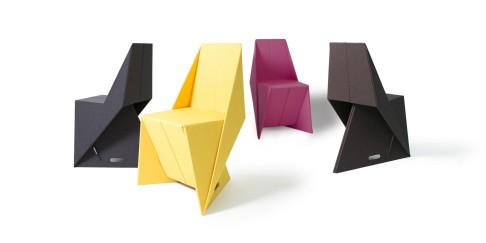
Online-to-offline portal shows the world great Hong Kong design
Design 1+1 features the work of emerging talent on its website, and displays them offline in stores, hotels and show flats, to help young designers build their brands and communicate their ideas.

Although, more than 30 years later, attitudes towards Hong Kong design have changed for the better, emerging designers in the city are still finding it tough to achieve commercial recognition and success.
"The harsh reality for Hong Kong designers is that most Hong Kong people still appreciate overseas design more," says David Chiu Kwok-wai, founder of furniture and homeware store Aluminium. "They think that something created and made overseas must be better while local stuff should be cheaper and isn't valued as much."
Friends visiting Hong Kong would ask me where they could buy iconic and real Hong Kong design products, so I thought it would be great to offer them somewhere they could come
The brainchild of Kiesly Tsang of Kiesly Tsang Concepts, Design 1+1 aims to support and promote local designers by helping them to create brand value, communicate their concepts to local and international audiences, and generate revenue - aspects of a business that might not necessarily be their forte. It does this by featuring the products of its chosen designers on its website for consumers to buy, as well as by placing products in prominent stores and working with other selected partners such as hotels, developers, interior designers and architects to build an offline presence.
"We combine business and creativity, introducing Hong Kong designers to their city and the world at large," says Tsang, who has worked in the fashion, textiles and design community for more than 10 years and for whom originality is key.

A self-confessed lover of cool and quirky objects, Tsang says the idea was partially born out of a desire to build her own shopping platform and store so that she could share the things she admired.
"Friends visiting Hong Kong would ask me where they could buy iconic and real Hong Kong design products, so I thought it would be great to offer them somewhere they could come and find all these items," says Tsang.
She identified Tai Ping Shan Street, one of Sheung Wan's oldest and coolest areas, as the ideal location for a studio to showcase her vintage and design products, but high rents made it impossible to set up shop. Although she found it easy to build an online platform, she didn't like the lack of interaction between herself and her consumers, so she started to look for a partner to help her display her wares.
"The idea behind Design 1+1 is to bring people together - designers, consumers and businesses," she says.

Design 1+1 enables consumers who might have seen a product online to go and see it first hand at easily accessible locations. What Chiu and Tsang's other partners also do by showcasing Design 1+1 affiliated products is create a contact point and build brand awareness.
"People coming into the store will see local names alongside foreign designer goods, and this creates brand value and awareness," Chiu says. "Designers should concentrate on being designers. They aren't sales and marketing people. If they have to act as salespeople, they lose out because it's not their skill. That's why there needs to be a 'middleman' like Kiesly to make connections and outsource those kind of jobs [such as sales and marketing]."
Chiu and Tsang believe that, along with the relatively small retail market here, there are other opportunities for emerging designers, particularly on the project side. With many hotels and developments opening here, on the mainland and in Macau, all kinds of homeware and other design products are in demand.
"There needs to be a dedicated person to push Hong Kong designers' products and help them tap into these big projects," says Chiu. "Kiesly is ideal because she knows a lot of architects, developers and hoteliers."

Also being sold on Design 1+1's website are products such as the F_Mondays cigarette/name card case by Jaakko Junttila, Michael Hoosen and Terry Law that SDWorks helped develop.
Designers should concentrate on being designers. They aren’t sales and marketing people. If they have to act as salespeople, they lose out because it’s not their skill. That’s why there needs to be a ‘middleman’ like Kiesly to make connections and outsource those kind of jobs [such as sales and marketing]
Set up in 2007 by professors Ernesto Spicciolato and Roger Ball, SDWorks develops, produces and commercialises items designed by students from the School of Design at Polytechnic University.
When it comes to design, Spicciolato has a similar mindset to Tsang. "I set up SDWorks because I kept coming across uncommon objects and interesting projects and wanted to see what the public's response to them would be," says Spicciolato. "It was a great gamble for me in the beginning but it is doing very well. For example, I wasn't sure about putting the Raindom umbrella [whose design changes colour in the rain] into production but everyone who saw it wanted to buy one and it sells about 100 pieces a month. It is a way to give young Hong Kong designers some commercial visibility, which is a positive thing."
Other fledgling designers are beginning to reap rewards. Husband-and-wife duo Kenneth Ng and Candy Kok of Civilian Goods, who design minimal and functional but stylish bags, say that partnering with the platform has been significant to their success by bringing them to the notice of a wider audience both online and offline.
"We believe that introducing Hong Kong brands can only be a good thing because Hong Kong designers need to be appreciated," says Kok. "Design 1+1 is very important to the industry as a whole."
Even Philippe Starck had to start somewhere.
